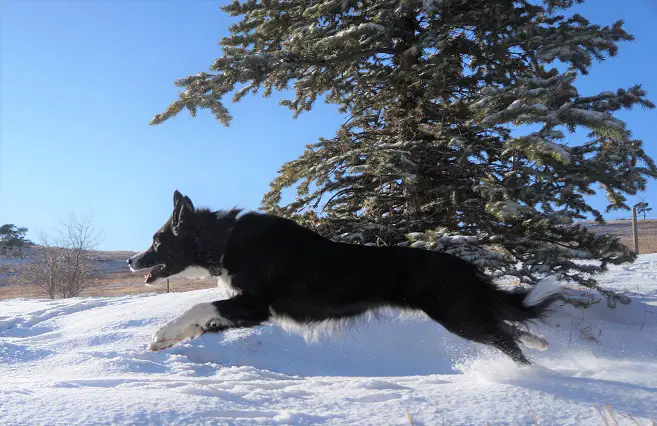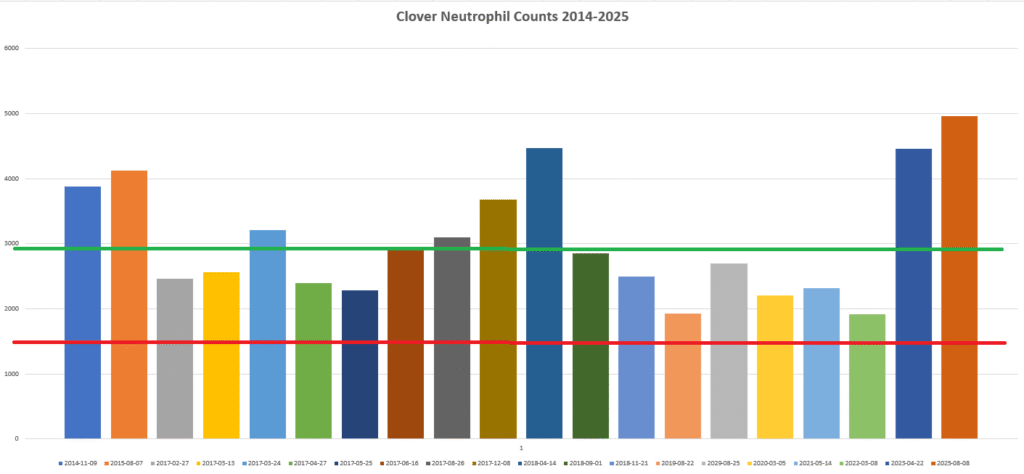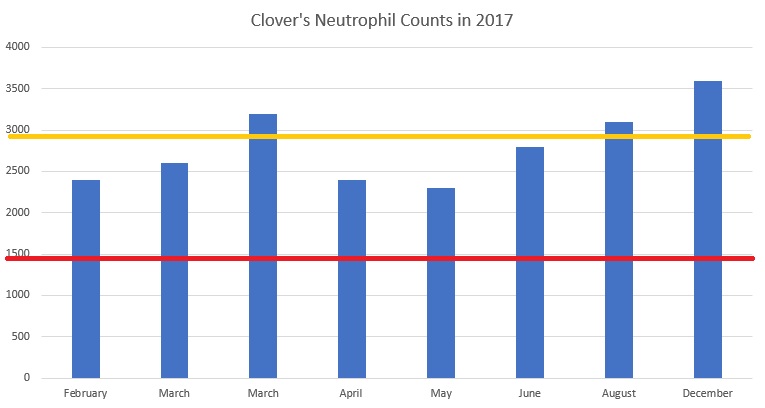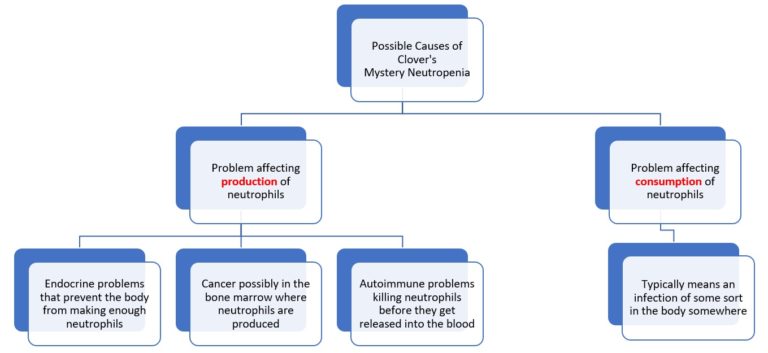Canine Neutropenia
Let’s look at a case study of neutropenia in dogs. At a very young age, our border collie CLOVER developed seemingly chronic canine neutropenia. That simply means she consistently measured low — not dangerously low, but low — neutrophil counts. That’s a type of white blood cell. It’s kind of important.
Neutropenia in Dogs – What Happens Next?
We did all the tests that our veterinarians recommended for canine neutropenia when it didn’t looks like it would improve, including a bone marrow biopsy. That test revealed that CLOVER’s neutrophils remained low across all 8 stages of neutrophil development. So, she just doesn’t make many of them. It is NOT like she makes a ton of neutrophils that then get destroyed somehow.
So, good news … sort of.

Ultimately, in our case, chronic neutropenia in dogs never turned into anything.
- Clover’s low neutrophil counts never got any worse, really.
- She never developed another illness or autoimmune disease from it.
Low White Blood Cell Counts Over the Years
After many years, we basically stopped worrying about it. In fact recently, CLOVER’s neutrophil counts have improved, according to routine bloodwork. Here is the latest chart I’ve been updating all these years. The GREEN line is the low end of normal neutrophil count in dogs. The RED line is where it starts getting scarier.

More About Low Neutrophil Counts in Dogs
If you want to read more about neutropenia in dogs, we gathered links to several prior articles about it that include common tests your veterinarian may want to run and why they matter.
-
Canine Neutrophil Counts – Update on Clover
Clover saw the board-certified veterinary internal medicine specialist again last Saturday. We rechecked her CBC (complete blood count), and I’m happy to report things continue to improve. I even made a neat chart to explain how things look with her latest canine neutrophil counts. Yay!
-
Neutropenia in Dogs – A Clover Update
June 20, 2017, Clover had a bone marrow biopsy at Wheat Ridge Animal Hospital in Wheat Ridge, Colorado. It took longer than expected to get the full biopsy results from the veterinary pathologist at the University of Michigan, where the core sample was sent. The results answer some critical questions and raise others. Here’s what we know and what we don’t.
-
Neutropenia in Dogs – A Clover Mystery
Neutropenia in dogs – Our saga with Clover’s weird white blood cell counts continues, so we saw a board-certified veterinary internal medicine specialist (the same one who helped us with Clover’s non-stop UTIs as a puppy). The headline is that, right now, the neutropenia itself isn’t posing much of a danger (unless her values continue to drop), but the possible causes for the neutropenia fall into scarier territory.
-
Dog Blood Work Update and Worry
Remember I said back in March that we did NOT think a new dog supplement was causing Clover’s weird dog blood work problems? Perhaps premature. We tested Clover’s blood again last week, nearly a month after one blood test showed improvement. The news? Her dog blood work update results look WAY off again. That puts us back to looking at a supplement as the issue since I went ahead and put her back on it when her values started to improve. Drat!




